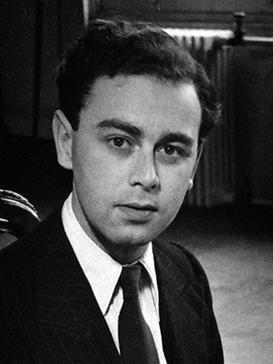Raymond Russell (organologist) facts for kids
Quick facts for kids
Raymond Russell
|
|
|---|---|
 |
|
| Born |
Raymond Anthony Russell
27 May 1922 |
| Died | 17 March 1964 (aged 41) Crown Colony of Malta
|
| Nationality | British |
| Occupation | organologist |
| Known for |
|
| Parents |
|

Raymond Anthony Russell (born May 27, 1922 – died March 17, 1964) was a British expert on old musical instruments. He was especially good at understanding and collecting early keyboard instruments. These are instruments like harpsichords and clavichords. He put together a very important collection of these instruments. Today, this collection is known as the Raymond Russell Collection of Early Keyboard Instruments. You can find it at the University of Edinburgh in Scotland.
Contents
Raymond Russell's Life
Raymond Russell was born in London, England, on May 27, 1922. His father, Gilbert Russell, came from a rich family. His mother, Maud Nelke, was known for supporting artists. The family was very wealthy. From 1934, they lived in a large home called Mottisfont Abbey in Hampshire.
Joining the Army
When Second World War started, Raymond first said he did not want to fight. He was officially allowed to avoid combat. But he changed his mind and joined the Royal Fusiliers army group. He became a captain in the army.
Collecting Old Instruments
Even before the war began, in 1939, Raymond started collecting keyboard instruments. Over the next 20 years, he gathered many clavichords and harpsichords from the 1600s and 1700s. His collection included instruments from all over Europe.
- He had English spinets.
- He collected early harpsichords and virginals from Italy.
- He also had instruments from Flanders made by the Ruckers family.
- There was a French instrument by Pascal Taskin.
- He owned a clavichord and a harpsichord from North Germany. Both were made by Johann Adolph Hass.
Raymond was a skilled harpsichord player. He became an expert in the study of musical instruments. He helped organize the keyboard instrument collection at the Victoria and Albert Museum. He also worked on the collection at Fenton House.
Writing a Book
In 1959, Raymond Russell wrote a book called The Harpsichord and Clavichord: an Introductory Study. This book gave very accurate and detailed descriptions of these instruments. Raymond believed in building and playing instruments in a way that was true to their original style. He thought people should study old instruments and use traditional methods. His book helped instrument makers like Frank Hubbard learn these old ways.
Raymond was also an expert on old medical books. Towards the end of his life, he studied old objects from the island of Malta.
The Russell Collection
By 1960, Raymond Russell decided to give his collection to Edinburgh University. He wanted it to be a place where people could study keyboard instruments and how they were played. But he died before this plan was fully finished. He passed away in Malta on March 17, 1964.
In 1968, Raymond's mother gave almost all his collection to the university. She did this to honor his wishes and his memory. The university later bought two more of his instruments. The gift also included Raymond's notes and his collection of photos of old documents.
The collection has 21 instruments. It is called the Raymond Russell Collection of Early Keyboard Instruments. You can see it at St Cecilia's Hall in Edinburgh.

